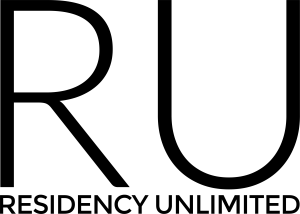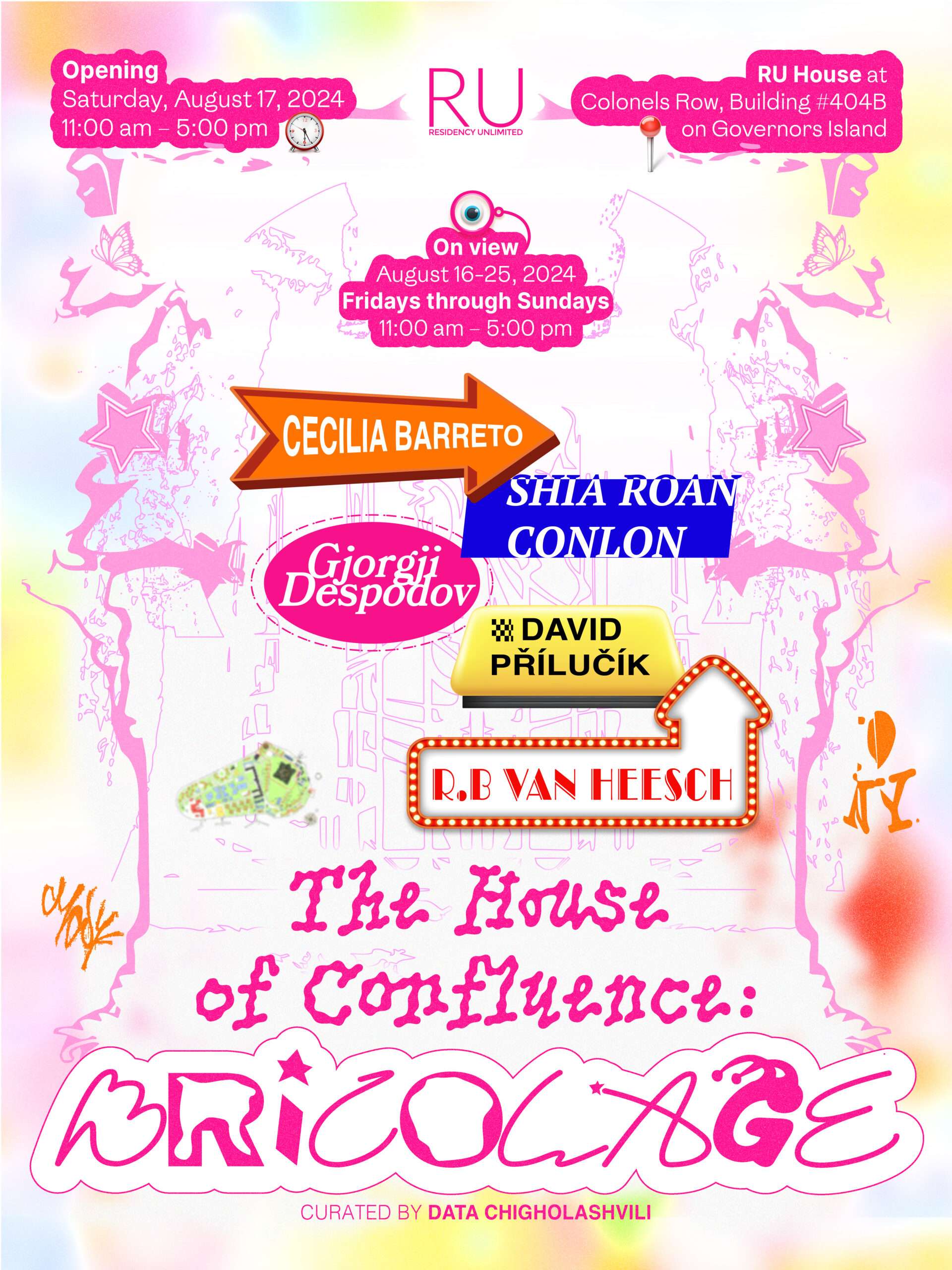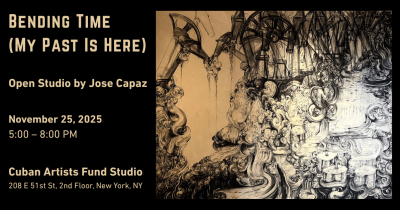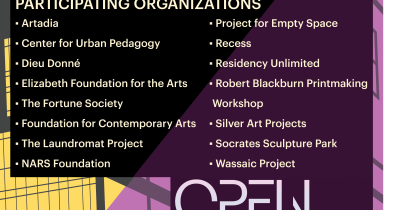Opening: Saturday, August 17, 2024 | 11am – 5pm
On view: Fridays through Sundays, August 16 – 25 | 11am – 5pm
Location: RU House at Colonels Row, Building #404B on Governors Island (map)
Ferry information | Video directions to RU House
Click here to view the online brochure
The House of Confluence
Art residencies are like confluences – people from different places travel, gather, and work for some time, and various ideas, approaches, and practices flow with each other. NYC, a unique urban confluence, has bodies of water flowing around, and where some of them confluence, there is a historically layered island – once referred to as Paggank (meaning nut island) by the native Lenape, later reserved for colonial governors, then used as a military base that was decommissioned in the 1990s. Governors Island is now open to the public, art, culture, and education. The row of former houses has a new function now – every year from May to October, various organizations become temporary hosts with activities through the “Organizations in Residence” program of Governors Island Arts. Residency Unlimited (RU), a renowned international art residency program in NYC, is an organization in residence at one of these houses. For some time in 2024, this becomes “The House of Confluence” where various approaches coalesce through exhibitions and open studio events.
See you on the island!
Bricolage
In August 2024, “The House of Confluence” presents a group exhibition “Bricolage.” It showcases the works of five artists currently in the residency program of RU: Cecilia Barreto (Mexico), Shia Roan Conlon (Finland), Gjorgji Despodov (North Macedonia), R.B van Heesch (Netherlands), and David Přílučík (Czech Republic). This exhibition is curated by RU Guest Curator Data Chigholashvili.
Bricolage is a loanword from French that relates to the exhibition not with its direct translation, but conceptually through its multifaceted understanding in arts, humanities, and social sciences. It connects with “The House of Confluence” by reflecting on international exchanges in the arts, and in this process, bringing residency group shows together to offer new insights. Moreover, bricolage here is seen as worldmaking (introduced by Nelson Goodman), more in a sense wherein culture and meanings are (re)considered in flux, as lived experiences – that critically build on existing symbols, knowledge, and imaginations to create new understandings and directions. Through different topics and approaches found in the artworks, the exhibition proposes a diversity in worldmaking. In this bricolage, we find revisiting symbols and charts, representing personal or imaginary worlds, addressing less-known stories, and exploring fragments of reliefs or landscapes – aspects that flow and differently emerge in the works, creating interconnections concerning the complexity of how we make the (sense of) world around us.
The first floor of the house presents rather personal aspects in worldmaking, while the two installations differ in approaches and forms of expression.
The works of Shia Roan Conlon are intimate representations of trans lives, which celebrate desire, fantasy, liberation, and everyday life. “Family Portrait” is a long-term project wherein the artist explores queer and trans archives, combines this material with his personal pictures from childhood and artistic practice, and explores the idea of family. This bricolage of images and ephemera is like a patchwork of queer history and art, offering insights into worldmaking wherein marginalized groups have often been missing.
Interested in exploring the inner world through experimental filmmaking, the immersive installation “Trinity: The Plot Hole” by R.B van Heesch uses material from his ongoing film project, which is inspired by the book “Mount Analogue: A Novel of Symbolically Authentic Non-Euclidean Adventures in Mountain Climbing” by René Daumal. The installation utilizes working footage from this project, develops analog manipulations, and creates kaleidoscopic sequences to represent the cinematic effects of spiritual transformation.
Through the works of three artists working with different forms and approaches, the second floor of the house proposes redefined understandings of collective myths, landscapes, and realities.
Cecilia Barreto works on artistic research projects in which socio-economic data from various sources become the underlying structures of her artworks. Focusing on extractivism, and its social and environmental consequences, her abstract paintings are based on diagrams, figures, and maps. Through this approach, the artist critically reflects on how places and communities are affected by extracting resources, often for the “cleaner world” in other parts of the planet.
In “Validation Seekers (The Gods of the West),” Gjorgji Despodov focuses on the journey of a hero and rethinks myths and archetypes. The relief reminds us of classical sculptures but with a body-positive approach, where contemporary symbols and elements also merge with them. The installation hints at consumerist culture, suggesting a world where emojis and certain symbols act like prayers, worshipping new heroes, deities, or gods – which in the manner of bricolage consists of old and new forms, and in their representations take the plastic form of our time.
Challenging anthropocentric views on nature, and researching image-making and romanticization of landscapes, David Přílučík offers a CGI world where various layers combine. It is ambiguous whether to what “Relief” the title refers to – an outline of an actual landscape that one knows, an imagined one, and/or that feeling of relief? Manipulated sounds are as enigmatic as the emotions, conditions, and actions of humans in this place that shifts. It offers a bricolage of landscapes from the past, reimagined through representation that the work transcends, exploring landscapes and reliefs of today’s world.
Click above to see images from the opening reception.
Poster design by © Gjorgji Despodov
This program is supported by the Trust for Mutual Understanding, Finnish Cultural Institute in New York (FCINY) and Saenger Galeria.

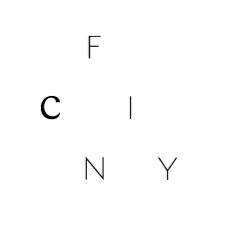
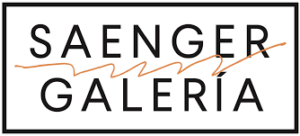
This program is supported, in part, by public funds from the New York City Department of Cultural Affairs in partnership with the City Council.
![]()
RU is grateful for the partnership with Governors Island Arts.

